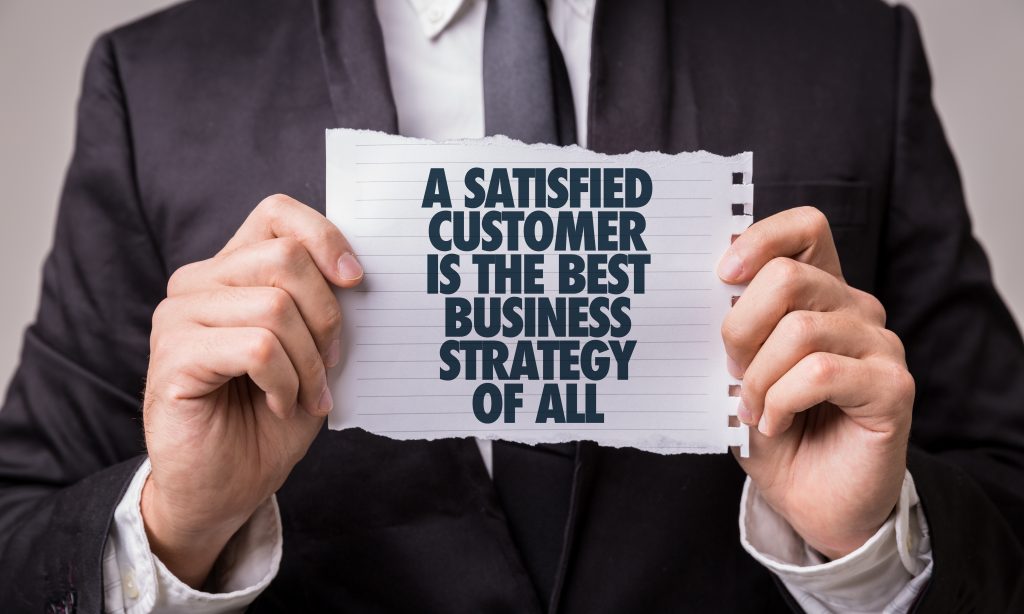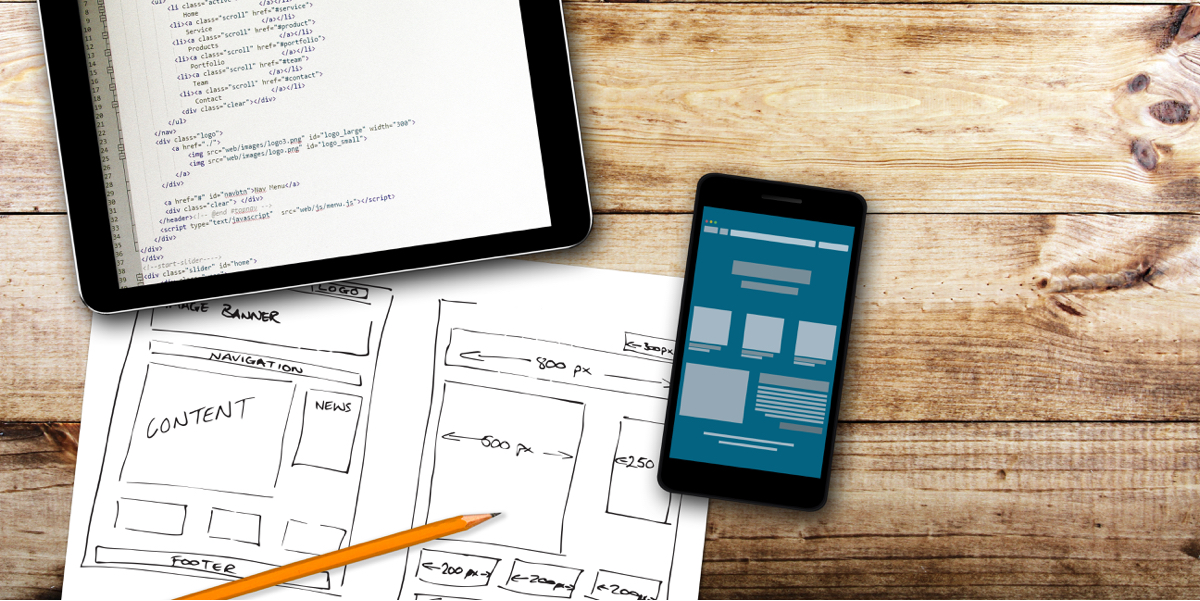Since time immemorial, the customer has been the most important aspect of any business. Sure, the product matters but if you don’t have anyone to buy it or use it, you won’t get very far. We no longer live in times where your village only has one baker and you have no choice but to buy the burnt bread from the guy with the horrible attitude. To be alive today is to have more options for everything than our ancestors could ever have dreamed of. We live in a world where we can get information about companies and their products in real-time, wherever we are.
No matter what product you are designing, the success of your venture lies in crafting something that is customer-centric; from start to finish, you are thinking of your customers and crafting everything around them. In a world seemingly powered by smartphones and smart devices, this means creating customer-centric apps or products that, above all else, prioritizeUI and UX.
The Importance of the Customer
By the early 2000s, the internet was booming and more and more business were hawking their wares online. The result was that people had more choices than ever, while businesses had to work harder than ever before to stand out and effectively market their products. But it was the economic downturn in 2008 that really changed the game. Almost overnight, customers were even more selective in which companies they gave their money to. The brands that survived, even thrived, during this time were the ones treating their customers with respect, amazing service and reliable products.
There was another element to this changing dynamic. During the 2008 recession, the world was encountering something that has transformed our lives in ways we would never have imagined: social media. Although online communities and chat groups had been around for a while, they started to evolve and from MySpace (Remember MySpace? If not, well… enjoy your youth!) we moved into the era of Facebook and then Twitter, Pinterest, Instagram and so on.
Social media marketing and social selling are now part and parcel of how we conduct business today. Word of products and services can spread like wildfire which is a blessing or a curse depending on what the word is. We can compare products and services in real-time and over multiple devices which is a challenge for many brands.

The First Steps To Becoming Customer-Centric
Customer centricity means doing business with a customer so that you give them a positive experience before, during and after the sale or interaction. The goal of customer centricity is to drive repeat business, customer loyalty and profits. In a tech-driven world, customer centricity relies heavily on a knockout UI/UX.
There are few things more frustrating than purchasing a product or app only to discover that it fails to do what it promises. There are plenty of apps that fail because they’re so loaded with bugs that it won’t run for more than a few seconds. The bigger issue are all the apps designed with seemingly little to no attention paid to the user interface (UI) and user experience (UX). These are the apps that seem to have forgotten about the customer and are not customer-centric.
Before you get down to really focusing on UI/UX, there are two key things that should take place.
First and foremost, you need to focus on what the customer wants. Is your idea something that people want and/or need? Generally, when the answer is no, it means you need to go back to the drawing board because it shows that you’re neglecting who your customers are and what they want. Of course, there are exceptions to this. Before Steve Jobs pulled out that first generation iPhone, it was something none of us thought we needed but now people are so attached to their smartphones that it’s led to a new type of injury.
Customer centricity isn’t the function of only one group within your organization, rather it needs to be something that every department works at. While each department should have individual goals, it is important that they are all held to the same standards and metrics, and that there are company-wide goals for customer centricity.
By having all departments on the same page when it comes to understanding and interacting with the customer, and by ensuring that each department behaves consistently, customers will get a feeling of cohesion and security from your brand. Ultimately this will drive a feeling of trust and comfort in your customers which plays a big role in keeping them loyal to you. Since it’s 6-7x more expensive to acquire new customers rather than keeping your current ones, the value of customer loyalty can’t be emphasized enough.
All About That UI/UX
As more and more business happens online or through the use of apps, it has never been more important than it is now to have an outstanding User Interface (UI) and User Experience (UX). Once you have your idea and once you’ve got all departments on the same customer-centric page, it’s time to really get to work.
There are 5 main elements of a good UI/UX.
Clarity.If you’ve ever downloaded an app and felt like you were trying to navigate a maze, then you already know why this is important. Users want to use an app without having to watch a twenty-minute tutorial online. At any given place in your app or website your users should be able to tell:
what just happened (how they got to where they did or why the app did the thing that it did),
where they are in the app,
what they can do where they are,
and what’s going to happen when they do it.
Flexibility.You want to design an app that works well and looks good on a variety of operating platforms and resolutions. It’s one thing to design something that looks gorgeous, but it has to load properly and without taking hours and massive amounts of bandwidth to do so. This is one area where you don’t necessarily want or need to reinvent the wheel. It’s okay to follow the tried and true and stick to traditional design solutions with simple, responsive layouts and text that is easy to read.
Familiarity. Human beings are creatures of habit and we enjoy seeing familiar things because they comfort us and we find them more beautiful for the associations they bring up. As with flexibility, this means that you can often use everyday solutions. If you’re introducing a truly novel app that does something completely new, a traditional layout will work in your favor because the familiarity will make things seem less foreign and complex.
Efficiency. Simply put, this is the ability of your users to complete their main tasks in the most efficient way possible. To figure this one out, you need to identify what routine tasks users have to do when they use your app – is it adding content? viewing images? – and then you design your interface for these tasks. How many forms does the user have to fill out? How many screens do they have to cycle through? This is where you trim the fat, making the most streamlined process possible.
Structure and Consistency. Although consistency is always important, the more novel your app or product, the more important consistency becomes. Consistency helps to breed those vital feelings of familiarity while structure makes things approachable and manageable. You can bring these things to the forefront of your product by:
Having a strong visual hierarchy where the most important things are easy to spot,
Ensuring you have an obvious visual order to your information or data,
And being consistent with color schemes and navigation options.
Consistency and structure help your user to feel comfortable which encourages them to keep using your product or service.
Of course, once you’ve factored all of this in, there’s no guarantee that your app isn’t going to glitch out on your customer at least once. With apps, it’s not possible to send a tech into every home to figure out the problem. Or is it?
Co-browsing is your friend. A relatively new technology, co-browsing allows your customers to share their browser with an expert and has been shown to benefit companies by increasing customer satisfaction, increasing first-call resolution and reducing handling time.
For those moments when you need a more powerful tool, there’s virtual reality (VR). Sometimes the technical resolution of an issue is too complex to explain. With VR, a customer wears a VR device so that as you explain what they need to do, they can see exactly what they’re doing. VR has been shown to make 62% of consumers feel engaged with your company and products and 71% felt that VR showed companies to be modern and forward thinking.

This Stuff Matters: A Real Life Example
Abstractly, it’s easy to see why all this is important but what does it look like in practice? Let’s take a look at Amazon.
When Amazon launched its online presence in 1995 it was simply an online bookstore, albeit a very comprehensive online bookstore. Books can be divided into endless genres and sub-genres and Amazon, by starting simply and proceeding slowly, gave themselves time to figure out key elements like the best search algorithms and the user-friendliest layouts. They gave themselves time to establish clarity and when something didn’t work or needed adjusting, they demonstrated flexibility.
As Amazon added more products to their offerings – DVDs, music, household goods, etc. – they kept everything else largely the same. The layout was the same and you still searched for things the way you always had. Although they were adding vast amounts of new options, they changed little else and bred a feeling of familiarity in their users.
Because Amazon proceeded slowly in adding new elements to their website, they were able to identify best practices and cut unnecessary steps. Consider their one-click check-out option. By removing a number of steps users had to go through to complete a task, they nailed the efficiency aspect of the game.
Finally, the overall layout of Amazon hasn’t changed much at all in the last decade. Sure a new page might pop up to tell you about the shows they’ve developed or the restaurants that deliver for them, but overall, they’ve maintained the same structure and consistency that we’ve come to associate with them.
In a world where most of us carry smartphones everywhere we go, the future lies in creating products that integrate seamlessly with these smart devices. To do so, your products need to be customer-centric. Every step you take should involve asking yourself the question: where does the customer fit into all of this?
When we remember that customer centricity is a journey and not a destination, we’re able to factor the user experience and user interface in from day one. With the customer constantly in mind, you learn to continually strive for clarity, flexibility, familiarity, efficiency, and structure and consistency.
If nothing else, perhaps this will motivate you to live and breathe UI/UX for your customers: research by Deloitte and Touche found that companies that are customer-centric are 60% more profitable compared to companies that don’t prioritize focus on the customer. And who doesn’t love a good profit?

